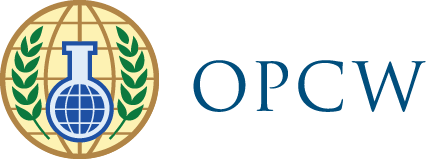
On 27 April 2006, the Prime Minister of the Kingdom of the Netherlands, H.E. Mr Jan-Peter Balkenende, during his visit to the OPCW on the occasion of the First Observance of the Remembrance Day for All Victims of Chemical Warfare unveiled a photograph of Dr Arie Jacobus Johannes Ooms. The Prime Minister also officially named one of the main conference rooms used by OPCW delegates at the Headquarters the “Ooms Room”.
As the head of Dutch chemical defence research, Dr Ooms worked for 23 years for the eradication of chemical warfare, which he believed could best be achieved by a combination of effective chemical protection and international chemical arms control.
On 27 April 2006, the Prime Minister of the Kingdom of the Netherlands, H.E. Mr Jan-Peter Balkenende, during his visit to the OPCW on the occasion of the First Observance of the Remembrance Day for All Victims of Chemical Warfare, unveiled a photograph of Dr Arie Jacobus Johannes Ooms. The Prime Minister also officially named one of the main conference rooms used by OPCW delegates at the Headquarters the “Ooms Room”.
Biography of Arie Jacobus Johannes “Jack” Ooms (1925–1999)
As the head of Dutch chemical defence research, Dr Ooms worked for 23 years for the eradication of chemical warfare, which he believed could best be achieved by a combination of effective chemical protection and international chemical arms control.
In 1942 Dr Ooms entered the University of Utrecht to study chemistry. In 1943 he refused to sign the Nazi loyalty declaration and made his way to England by way of Spain and Portugal, much of it on foot. He joined the U.S. Army and, in August 1944, returned to mainland Europe with the Allied landings in southern France. After completing his MSc degree and national military service, he joined the newly formed Chemical Laboratory of the National Defence Research Organization. In 1952 he finished his studies, and was appointed director of the Chemical Laboratory in 1965. Dr Ooms was appointed director of the newly merged Technological Laboratory RVO-TNO and the Chemical Laboratory in 1978 where he remained until his retirement in 1988.
Dr Ooms’ active participation in the negotiation of a permanent, multilateral ban on chemical weapons, began in 1969 when he joined as technical adviser the Netherlands’ delegation to the Eighteen Nations Disarmament Committee (ENDC) that later became the United Nations Conference on Disarmament in Geneva. Dr Ooms was the only delegate to the Conference on Disarmament that continuously participated over the full twenty-year course of these negations, which culminated in the adoption of the Chemical Weapons Convention for signature by the United Nations General Assembly in 1992. Subsequently, he served on the Netherlands’ delegation to the OPCW Preparatory Commission.
In 1991, Dr Ooms was appointed to the UN Special Commission then being established to oversee Iraq’s renunciation of weapons of mass destruction. This work continued to engage him in the months immediately prior to his death.
